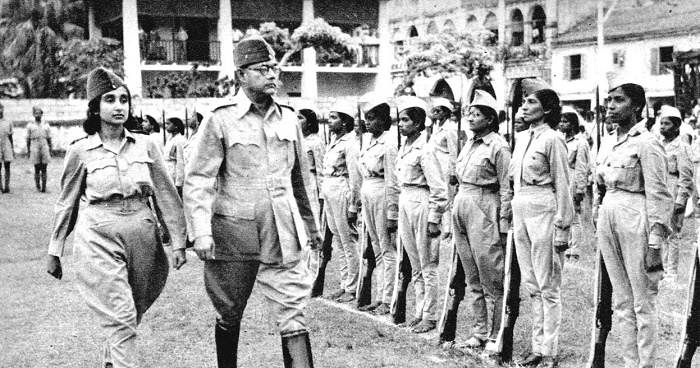Netaji Subhas Chandra Bose is as much a part of Singapore’s history as of India’s, a Singapore-based prominent writer said here on Sunday as rich tributes were paid to the legendary freedom fighter on the occasion of his 125th birth anniversary.
Bose’s revitalisation of the Indian Independence League and the Indian National Army (INA) marked the true advent of mass politics in Malaya (historical political entities in Southeast Asia’s Malay Peninsula), as he worked with labourers and invested in Southeast Asian Indians with a rare sense of dignity, according to presentations at a seminar organised by India’s High Commission.
”It destroyed the imperial grip holding India and Singapore together. Unlike Raffles (Sir Stanford Raffles who founded Singapore), Netaji is as much a part of Singapore’s history as of India’s,” Singapore-based writer Asad Latif said as he shared his insights into Netaji’s role in Singapore.
”He (Netaji) is central to India’s role in the making of an independent Singapore,” said Asad at the seminar ‘Netaji’s days in Singapore’, commemorating his 125th birth anniversary.
Asad highlighted that the Straits Settlements, which consisted of Penang, Malacca and Singapore (ports as part of early days of Malaya), was a residency (or subdivision) of the Bengal Presidency from 1830 to 1867.
”Interestingly, by 1867, Singapore was second only to Calcutta among the ports of Indian government. In a nutshell, Singapore then was an extension of colonial India,” he said in a presentation on ‘Netaji in the Indian Making of Singapore’, also a book on India-Singapore historical relations.
”The Indian imprint in the construction of Singapore is ineradicable,” Asad said, highlighting the fact that the British Raj had set up colonial Singapore from Kolkata rather than London.
Kolkata-born and Singapore-based author Nilanjana Sengupta also shared her insights on Netaji’s role in Singapore, pointing out that he had turned down an invitation from affluent Chettiars (community) in Singapore to a Dusshera celebration, pointing out that he could not enter a place of worship where not only Indians of other faith, but even Hindus of lower castes were not allowed.
The Chettiars were then the biggest donors for the INA, said Sengupta, who has been involved in the research of the INA movement and had published her first book on Netaji ‘A Gentleman’s Word’ in 2012.
”Rather than taking affront, the Chettiars decided to organise a national rally on the day of Dusshera. The temple precincts were filled to capacity, with men in the INA uniform and South Indian Muslims in black caps.
”This time, Bose not only graced the occasion with his entire entourage, but also delivered a moving speech,” she said.
If on one hand Bose kept away from religious extremists, be they Hindus or Muslims and preferred instead strong nationalists of moderate religious belief and tried to include and inspire minority groups, including women, he also played a significant role in mobilising labourers.
Netaji was the President of the AITUC (All India Trade Union Congress) and worked closely with various worker unions and in Southeast Asia too, he participated in the nationalist movement, invested in the Southeast Asian Indians with a rare sense of dignity and transformed the face of the labour union movement of independent Malaysia and Singapore, said Sengupta.
”For being a part of the INA, meant having your ears close to the ground, listening carefully to the heartbeat of the Indian community,” she said.
If, in Southeast Asia, the labour lines at the rubber plantations felt Bose knew exactly the kind of hardship and bonded penury they went through every day, as the chair of AITUC too, it had been Bose’s attempt to address the real concerns of the beleaguered workers – the retrenchments, wage-cuts and unemployment that they faced every day.
For this, Bose was willing to keep aside pushy right wingers, as he was wont to avoid doctrinaire communism.
According to Bose, India would have to work out a solution that suited her best, independent of any political or religious indoctrination.
The Southeast Asian chapter of Bose’s life is important because it was here that he had the freedom and scope to put into practice much of his realpolitik views and perhaps this is why it is here that the imprint of his footsteps and legacy is felt so strongly, said Sengupta.
Netaji’s work with labourers was further illustrated at the seminar. Bose had strong support from Rani of Jhansi Regiment of 1,000 Indian women soldiers from Malaya, Burma and Singapore of various castes and religions and social background fighting for India’s freedom, said Dr Meira Chand, who spoke at the seminar on ‘Brave Sisters: Netaji’s Women Warriors’.
Such as the strong dedication to fight for freedom that 80 per cent of the women in the regiment were illiterate labourers but dedicated to fight with Netaji.
The other 20 per cent women were educated and performed commanders’ tasks, according to Dr Chand, a Singaporean novelist of Swiss-Indian parentage.
PTI


















Discussion about this post